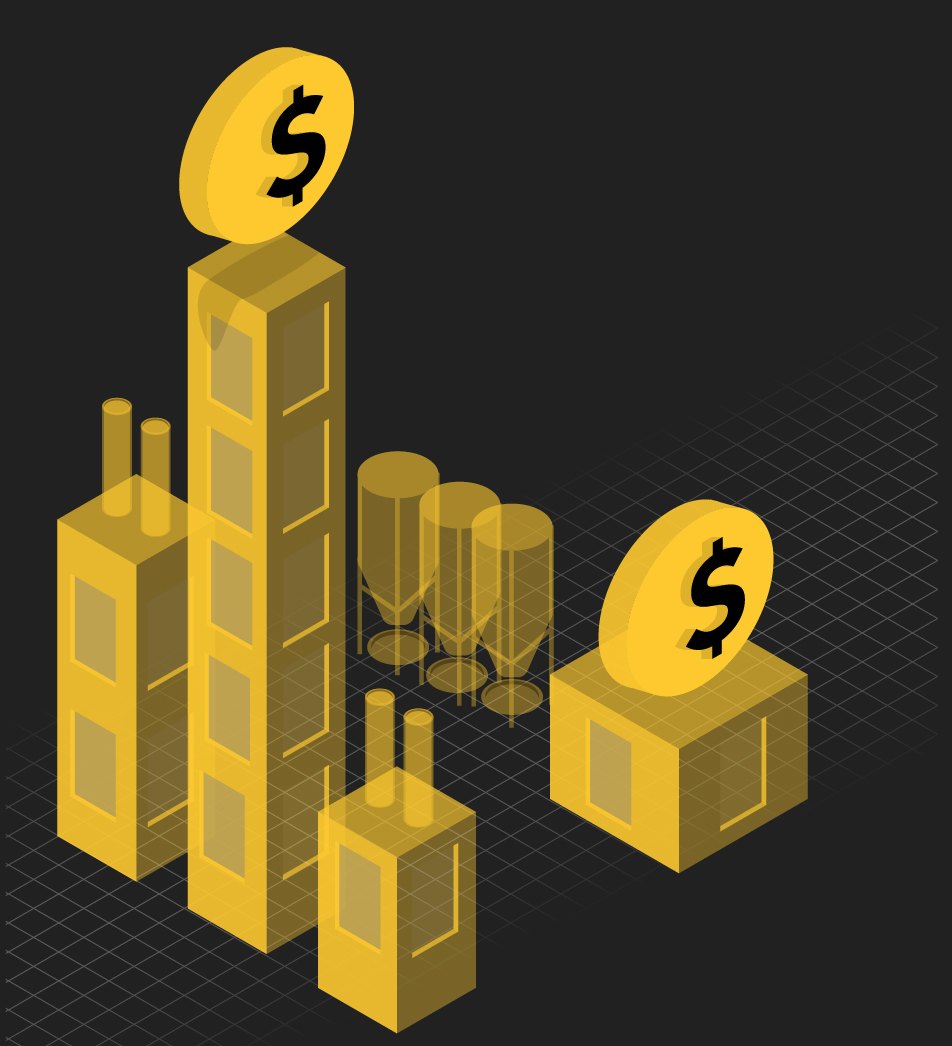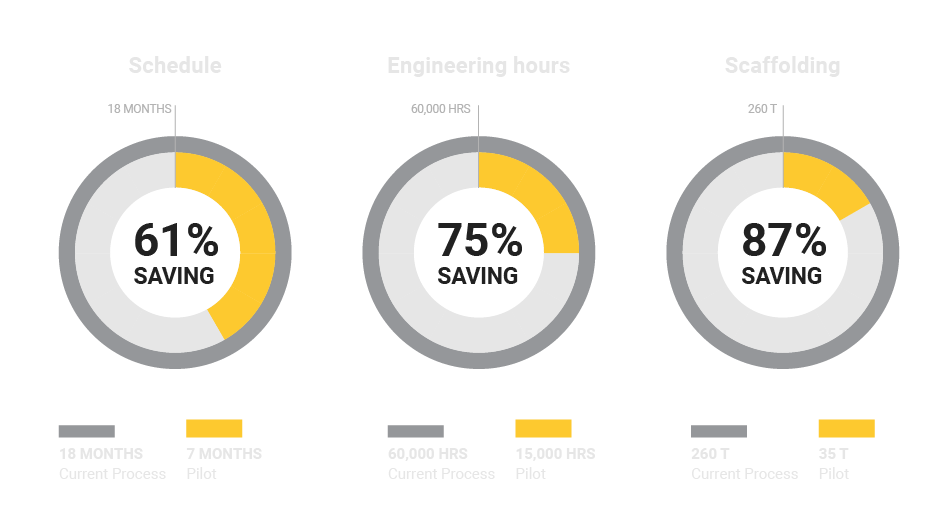
Increase plant efficiency and increase profits in a downturn
Discover the link between digital transformation and shipping containers.
Necessity is the mother of invention as they say.
Though some oil and gas and mining operations have endured a turbulent few months which has resulted in forced redundancies and loss of expertise, it has also opened the door to opportunity.
As we know, a single change in process can bring enormous benefits.
Take the modern day shipping container for example.
Prior to their development, cargo was painstakingly loaded piece by piece into the holds of ships then unloaded the same way. The use of simple steel boxes to hold portions of cargo changed global trade forever, making the process far more efficient and cost effective.
Imagine if that change was never made.
What if cargo companies stuck to their old ways of doing things, even when they had knowledge of a better alternative?
The Kodak decision to dismiss digital photography decades ago despite inventing it comes to mind.
And we all know how that worked out.
Linking Data to Workflows
In our recent post Data Harmonisation and the Business of Saving Big Money, we discussed the importance of data harmonisation in the digital transformation journey and how having access to the right information can help a company deliver greater efficiency within its operations.
But simply HAVING the right information is only one part half of the equation.
It is the WAY that information is used to create more efficient workflows that is the game changer.
Just like the introduction of shipping containers to logistics, linking data to workflows is the secret that unlocks enormous value across the whole company.
Creating a Culture of Digital Change
Digital transformation is the process of evolving business workflows so they are driven by information collected from across company operations.
Data that’s collected from multiple sources with different input is then ‘harmonised’ to make a clear subset of data that will have a direct impact on the workflows being executed.
But this is not simply a matter of taking existing workflows and digitising them.
Here’s the thing:
- The ultimate goal of digital transformation is to deploy data so that workflows are made more efficient and the workforce is empowered to optimise their time spent on critical tasks.
- Digital transformation requires an understanding of how collected data is to be used and shared across the business, and how any redesigned workflows that come from this process will be deployed and secured.
- By linking data to workflows, we can make an impact on productivity. For example, data may identify part of an inspection workflow that is repeated unnecessarily, so the process can be redesigned.
This is the difference between simply collecting data and being able to use the data in a way that makes an impact on productivity and efficiency.
It is as much a cultural shift as it is a technical one.
Creating Workflow Efficiency from Complexity
There are three crucial steps in the digital transformation journey to create new workflows.

Digitally transforming a business’s operations and linking new workflows with harmonised data is like putting cargo into a shipping container – it’s simply better, and you’ll be amazed you ever did it any other way.
Change in Action: Woodside Case Study
A textbook example of a business committing itself to the entire process of digital transformation is Woodside, which engaged Silverhorse to improve its corrosion management processes at the Karratha Gas Plant.
- Through deploying data harmonisation across information gathered at the facility, Silverhorse found areas that could be improved and created more efficient workflows.
- Inspection and repair teams were then combined into a collaborative unit and equipped with tablets that interfaced with Woodside’s central data lake on a 3-D visual model, making the changes with minimal back-office support.
- This resulted in a 61% saving of scheduling time, a 75% saving for engineering hours, and an 87% reduction in the use of scaffolding.

This is a real world demonstration of Silverhorse’s approach to digital transformation using its AssetHive technology suite.
Armed with new workflows created from a single authoritative data source, Woodside’s workers drastically improved efficiency.
But best of all, the changes are interlinked to the central data lake, meaning they can be constantly upgraded using metadata collected in real time, placing the power to make improvements directly in the hands of workers.
This circles back around to the crucial point that change within a company is cultural as well as technical – directions are set by management and then delivered at the coalface.
Data Solidifies Experience and Expertise
The advantage of having a skilled workforce is that individuals or entire teams can gain deep experience within their tasks that result in specific expertise.
When a skilled employee leaves the company or a team is dispersed to other roles, that expertise and experience – an organic form of intellectual property – is lost forever while the process remains unimproved.
And here’s the best part.
With harmonised data deployed to enable efficient workflows, the processes themselves become more effective forms of intellectual property for the company, immune to the vagaries of the workforce.
And with workers at the coalface empowered to improve the processes through decisions based on data, a positive feedback loop is created that allows personnel to upskill, while their workflows become more effective.
In the absence of permission to make things better, workers will find their own ways, and take those improvements with them if they leave. But if management allows changes, those improvements will become part of the system forever.
AssetHive Unlocks Workflow Value
To succeed in digital transformation, you need harmonised data coupled with better, more efficient workflows. But above all, you need the will and workforce structures to push through change.
Silverhorse’s goal is to create collective intelligence that empowers people to make better decisions with the help of technology and a new way of working. We believe that digital transformation is of such enormous benefit that we created AssetHive, an intelligent data hub that connects a business’ data to new, more efficient workflows to deliver long-term value.
The bottom line is that all the data in the world won’t change anything unless it’s put to work in a meaningful way.
The shipping industry has never looked back; it will be the same for mining and oil & gas.
